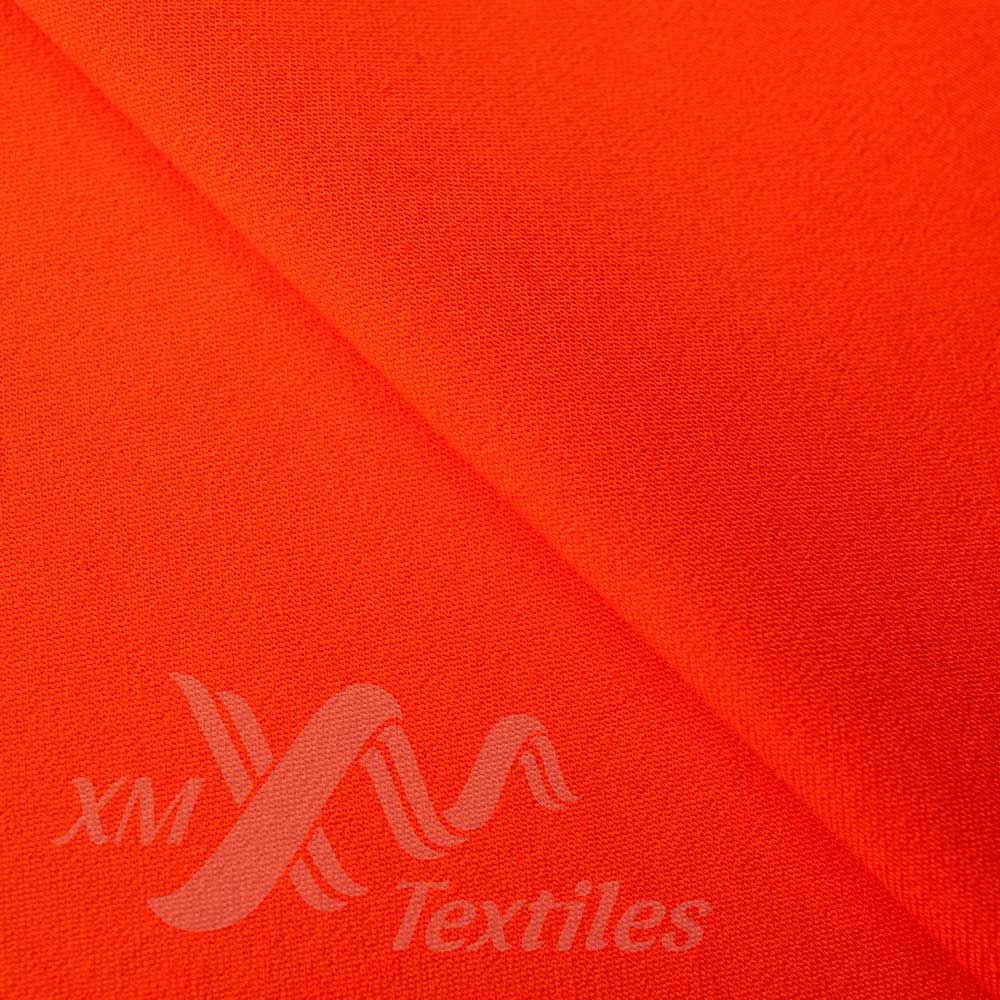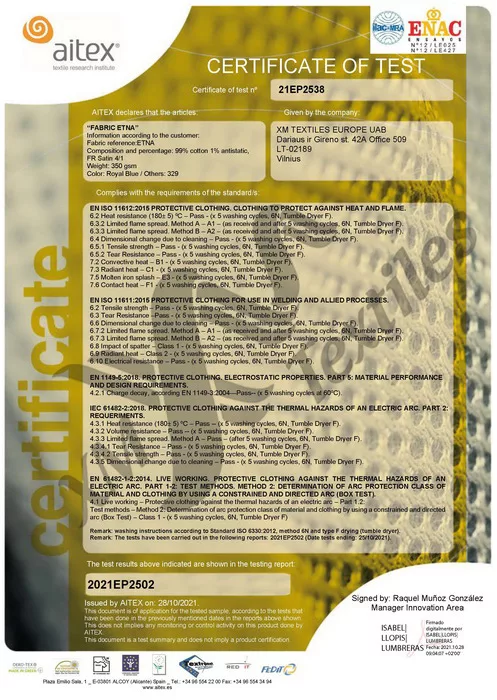OCTOBER 28, 2021 – XM FireLine fabric Etna has been certified by the Aitex (Spain) to EN EN 11611, EN 11612, EN 1149, EN 61482-11 & EN 61482-1-2 safety standards.
Etna flame retardant fabric is made of 350 gsm cotton with antistatic yarn and designed for use in Metallurgy and other industries. This fabric is best used for protective jackets, pants, overalls and other FR clothing.
Made of natural fibers it is soft and comfortable to wear and it protects from Flash fire and Electric Arc. Carbon antistatic yarn integrated as stripes in the surface of Etna makes it safe for use in explosive atmospheres. To prevent Electrostatic Discharge (ESD) sparks, antistatic fibers safely discharge static electricity eliminating the risk of fire and explosion.
EN 11612 certification included tests for Heat resistance, Limited flame spread, Tensile strength, Tear Resistance, Convective, Contact and Radiant heat, Molten iron splash, Domestic washing 5 cycles at 60C.
EN 1149-5 is European standard for garments that protect against electrostatic discharge where there is a risk of explosion e.g. in oil refineries.
It is part of a series of standards for test methods and requirements for electrostatic properties of protective clothing.
EN 1149-3 is a test method, that uses induction charging to evaluate how fast a fabric discharge, i.e. looses its electrostatic charge via air. According to the Standard the charge decay value should be no more than 4 seconds according to test method EN 1149-3. It means that antistatic fabric should loose its electrostatic charge in less than 4s.
More information about the fabric you can find on product page.


